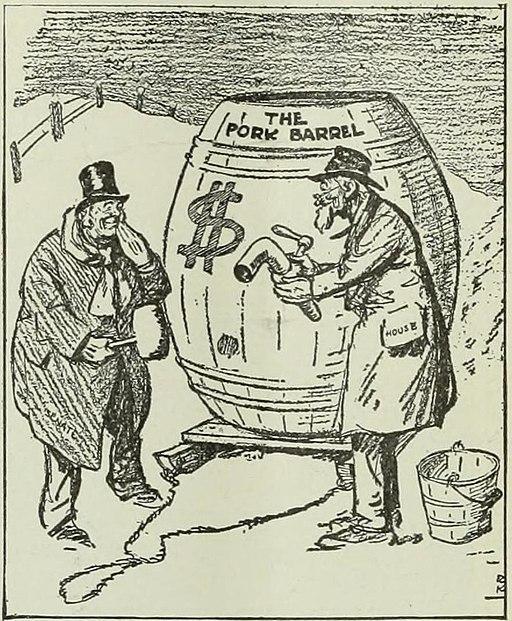
The potential for renewable gas in the UK: a rent-seeking anatomy
Thursday, 13 February 2020
In 2009, National Grid and Ernst & Young published a report on "The Potential for Renewable Gas in the UK", which claimed that by 2020, biomethane should make up at least 5% of our gas supplies, and could be 18% at a stretch (nearly 50% of domestic gas). In the event, biomethane makes up 0.7% of UK gas supplies in 2020. The projections were absurd, and obviously motivated by commercial interest, yet they were widely cited, including by government, and influenced policy. We explore in this report the evidence that the projections were not credible at the time, and the impact of this successful rent-seeking effort.
Introduction/Summary
In January 2009, National Grid published a report titled “The Potential for Renewable Gas in the UK”, produced for them by Ernst & Young (NG/E&Y).[1] The report argued that renewable gas could make a major contribution to the UK’s gas requirements by 2020: 15% of domestic gas as a “baseline”, up to 48% in their “stretch” scenario. It estimated the cost at £10bn, and claimed this would require a similar level of support to that offered to offshore wind.
This was not merely a piece of academic or market research. A government measure to encourage renewable heat seemed likely finally to materialise. The NG/E&Y paper was intended to influence the development of that measure, and was effective in that regard.
The paper’s estimates for the potential production of renewable gas for grid injection were unrealistic. We are now in their target year, and actual performance is way below even their “baseline” projection.
|
million m3 p.a. |
2009 Projection of 2020 Potential |
Estimated 2020 Actual |
|
|
National Grid |
Credible |
||
|
Digestion |
|
|
|
|
Sewage / waste water |
270 - 629 |
0 - 100 |
20[2] |
|
Manure – dairy and cattle |
254 - 507 |
0 - 350 |
5 |
|
Agricultural waste |
234 - 967 |
0 - 100 |
5 |
|
Food waste |
729 - 1,333 |
250 - 750 |
250 |
|
Biodegradable waste |
1,042 - 8,328 |
0 - 100 |
0 |
|
Energy crops |
- |
250 - 2,500[3] |
250[4] |
|
Gasification |
|
|
|
|
Biodegradable waste |
- |
0 - 1,600 |
0 |
|
Wood waste |
1,253 - 2,697 |
0 - 500 |
0 |
|
Miscanthus |
1,845 - 3,971 |
0 - 1,600[3] |
0 |
|
Total |
5,625 - 18,432 |
500-6,000 |
530 |
|
% total UK gas demand |
5 - 18% |
0.5 - 6% |
0.7%[5] |
|
% residential gas demand |
15 - 48% |
1.4 - 17% |
1.9%5 |
This is not just with the benefit of hindsight. We look in detail in this report at the information that was available and the maturity/credibility of the technologies at that point, and illustrate that no reasonable person would have projected such high figures for either their “baseline” or their “stretch” scenarios.
The report argued that, whilst total investment of £30bn was required, the net cost was only £10bn because £20bn would be required anyway for upgrading our waste disposal systems. There was a disconnect between this figure and the estimated £100/MWh that was required to deliver the higher end of the projection. Accounting for wholesale values, that implied an unmentioned subsidy-requirement of around £15bn p.a., a far cry from the £10bn capital cost on which the report focused. And that was on the basis of costings that were not realistic.
Two of the feedstocks (food waste and biodegradable waste) were costed so cheap that they were expected to contribute substantial quantities of gas at energy costs below market values. The fact that they had not already done so should have been an obvious indicator that the assumptions that produced these numbers were wrong. In the event, the RHI showed that food waste needed something over £40/MWh to be viable within the limited resource constraints, and support has never yet reached the level at which the gasification and methanation of biodegradable waste is viable.
The estimated energy values required for some other feedstocks were both unsubstantiated (how could one cost non-commercial technologies like gasification and methanation?) and unjustifiable (the implicit level of support far exceeded any credible carbon price). Sure enough, these feedstocks and technologies, which constituted the majority of NG/E&Y’s projected gas, delivered almost nothing by 2020.
In reality, the likely contribution of biomethane from AD, under conditions where most easily-putrescible material was digested, was not hard to estimate. We show how the 2020 outturn could have been estimated easily to a reasonable degree of accuracy in 2009.
The report was nevertheless highly influential. It was cited in numerous academic papers, pressure-group studies and government publications.
In mid-2008, the British government held a consultation on a Renewable Energy Strategy. Amongst a host of supporting research, biomethane was only mentioned once, and that was to dismiss it as “not commercially competitive”.
The NG/E&Y report was published in Jan 2009. The government’s response to the consultation (and further supporting research) was published in Feb 2009. In that response, the government had changed its position on biomethane, which was now expected to contribute a few TWh at modest cost.
The design of the Renewable Heat Incentive (RHI) evolved over the following two years before its launch in Nov 2011. Over that period, expectations of the contribution of biomethane were increased, and the level of support was almost doubled, both beyond what the government’s research had indicated was credible. Those involved at National Grid, their counterparties in government, and third-party observers all felt that they had been influential in the process.
By the late 2010s, experience showed how far from reality had been the projections in the NG/E&Y report. Far from recognising that motivated modelling is a bad way to approach policy design, National Grid and Cadent produced new reports claiming to show how their grids could be decarbonised and play the dominant role in decarbonising heat. Academics and government happily cited these studies as they did the 2009 report as credible projections to build into the UK’s plans for decarbonising heat and the gas network.
There is no such thing as institutional learning or memory; only the continuous repetition of the same mistakes.
Table of Contents
- Context
- The evolution of ideas on decarbonising heat
- National Grid / Ernst & Young's claims on biomethane vs reality
- An alternative method for estimating the potential
- Costs
- The influence of the NG/E&Y report
- The impact on policy
- Epilogue
[1] No longer available at: http://www.nationalgrid.com/NR/rdonlyres/9122AEBA-5E50-43CA- 81E5-8FD98C2CA4EC/32182/renewablegasWPfinal1.pdf. Uploaded to https://www.c4cs.org.uk/sites/default/files/2020-01/renewablegasUK.pdf
[2] Sewage biomethane plants identified at Didcot, Bristol, 5 Severn & Trent Water sites, and Howdon. Some co-digesting with food etc. Estimated share for sewage.
[3] The upper limits for energy crops for digestion and miscanthus for gasification are mutually-exclusive, i.e. there is a limit to the total amount of land that can be diverted to energy crops without excessive impact on other sectors. The total reflects this mutual exclusivity.
[4] 57,000 ha of maize for digestion in 2018. Proportion for biomethane vs electricity/heat unknown.
[5] Gas demand turned out lower than National Grid projected, so the proportion is slightly higher than the credible minimum projection, even though the total is close to the minimum.
Related blogs




